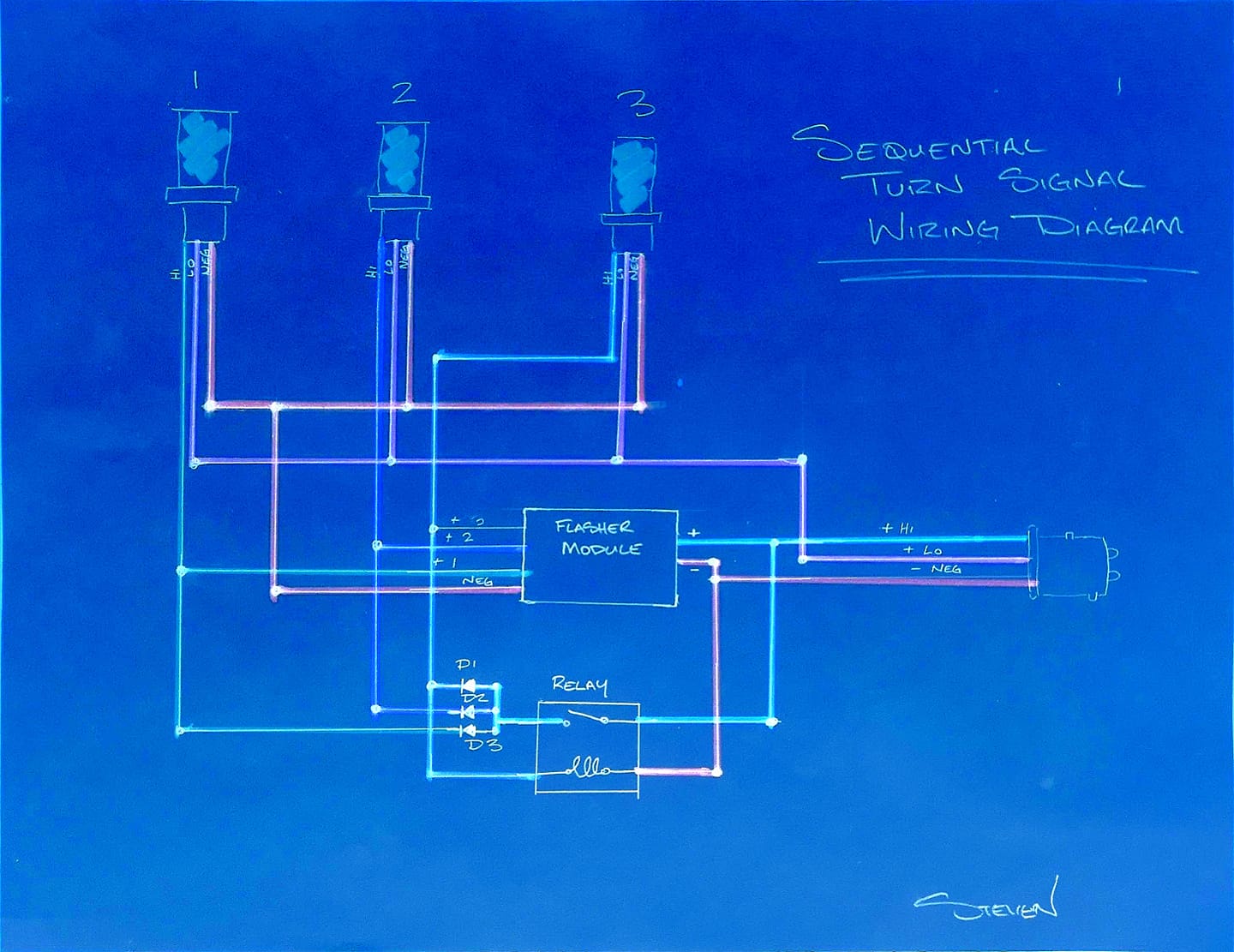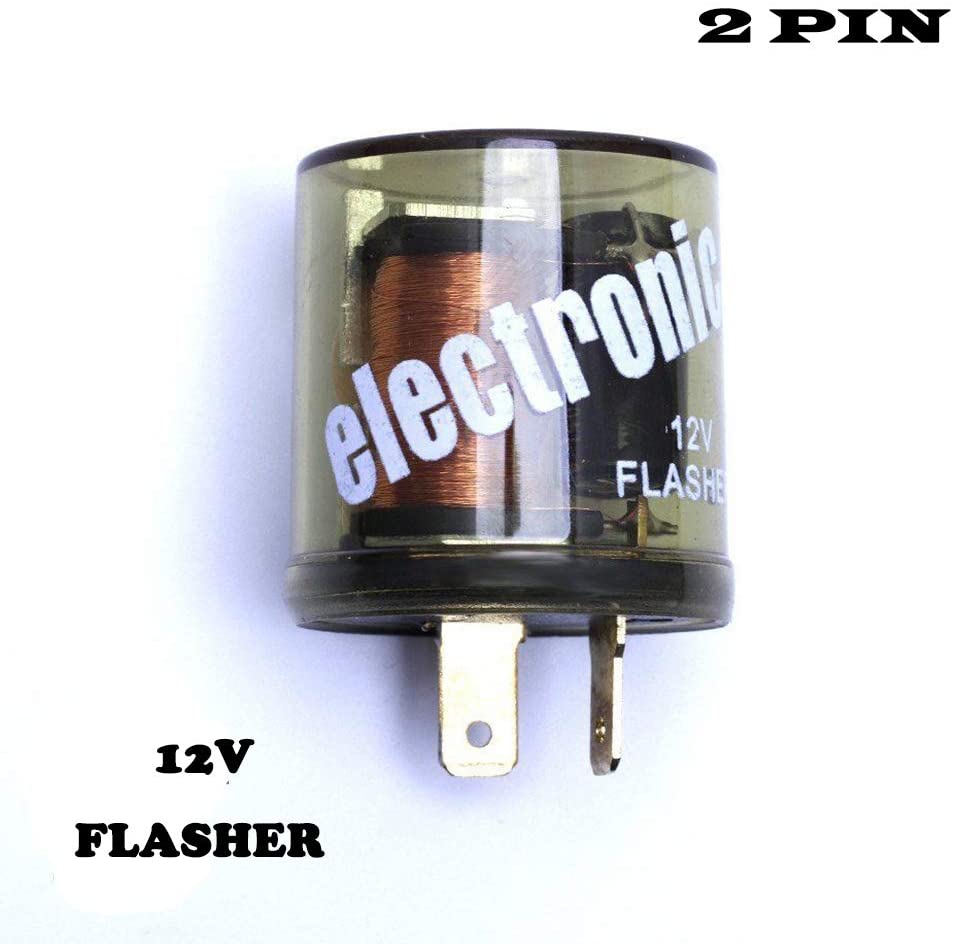
 
     |
| DIY Notchback Sequential Turn Signal Harness (Page 1/1) |

|
MuldoonMan
|
FEB 09, 08:57 PM
|
|
Hey gang, wanted to share a project I'm just finishing up.
I've been lurking on the forum for a while, but this is my first post.
About a year ago I picked up an 84 2M4 in pretty sad condition, and managed to get it driving before the snow flew. (I'm in Canada, so it's a pretty big deal around here  ) )
Over the winter I decided to tackle a project I've been wanting to get to for a while: Creating Sequential turn signals for my 2M4.
Before I began the project, I made a few rules for myself:
1 - I wanted to complete the project for less than $100 CAD
2 - I did not want to have to modify the factory wiring harness on my 2M4 in any way. (Has to be plug and play)
And, after a bit of finagling I think I've succeeded on both of these fronts.

To build this harness I used a flasher module I purchased off of amazon, tapped into one of the existing bulb sockets using a hollowed out bulb, and added 3 new sockets which are connected to the flasher module.
I also had to add a small self latching circuit using a relay and a couple of diodes to keep the flasher module from cycling (so when you step on the brakes it doesn't look like you have your hazards on)
In the end, the whole setup should ran me about $40 but might vary for you a little depending on depending in what you can grab from a scrap yard.
The beauty of this is that it is totally reversible and requires no mods to your factory harness.
All you will need to complete this project is:
Wire
Solder, shielding, heat shrink, etc.
2x Amazon flasher module (link below)
2x relay (used one from the scrap yard)
6x diodes (available on Amazon cheap)
6X 1157 bulb sockets (scrap yard / Amazon)
6x 1157 Red LED bulbs (optional, can reuse bulbs)
2x 1157 bulb bases (with glass and filaments removed)
Link to flasher module I used:
https://www.amazon.ca/dp/B0...ppx_pop_mob_ap_share
Please see the below Schematic for reference.

I have it all running on the bench right now, but I can't wait for the snow to melt so I can install it in my 2M4.
Let me know if you have any questions, happy to help answer.[This message has been edited by MuldoonMan (edited 02-09-2021).]
|
|

|
IMSA GT
|
FEB 09, 09:43 PM
|
|
|
How are you bypassing the factory flasher unit? If you click on the turn signal, the factory flasher unit will pulse the output to the bulb socket that is attached to your flasher. Or did you remove the factory flasher unit?
|
|

|
MuldoonMan
|
FEB 09, 09:53 PM
|
|
Great question! I'm actually using the factory flasher.
By adding the self latching relay into the schematic the sequential flasher basically turns on bulb 1, then bub 2, then bulb 3, then just holds all the bulbs on.
at this point the factory flasher will timeout, and cut power, resetting everything, and the cycle will repeat.
Hope that helps.
|
|

|
IMSA GT
|
FEB 09, 09:57 PM
|
|
|
Ok. Usually the factory flasher goes bonkers when anything is added or LED bulbs are used instead of regular bulbs with resistance. Good to see you have it working well.
|
|

|
skywurz
|
FEB 09, 10:06 PM
|
|
I did this many years a go probably in the archives. I had to use a truck flasher to slow down the flash. Im using traditional bulbs. Also had to find an extra socket and trim out the last socket on the light for the dual filament bulb so the brake lights extend all 3 slots.
Edit
Just checked all links i posted are dead. Lol
Mine was done with all a resistor type circuit.[This message has been edited by skywurz (edited 02-09-2021).]
|
|

|
MuldoonMan
|
FEB 09, 10:30 PM
|
|
Good point on the flaser module issue.
I ran into the LED flasher dilemma a little while ago when I updated my front parking lights to be separate clear driving lights and an LED turn signal.
what I ended up having to switch to was a Relay based electronic flasher, instead of the old Bimetallic spring ones that the fieros come with stock.
you can pick a relay based flasher up at just about any auto parts store. some of them even say that they are "LED compatible" .. other's don't... but they'll all work because they don't use the resistance of the bulbs to time the blinking. They're also popular with guys who tow trailers a lot and want the same signal speed when the trailers attached or disconnected.

|
|
    
  |
|















